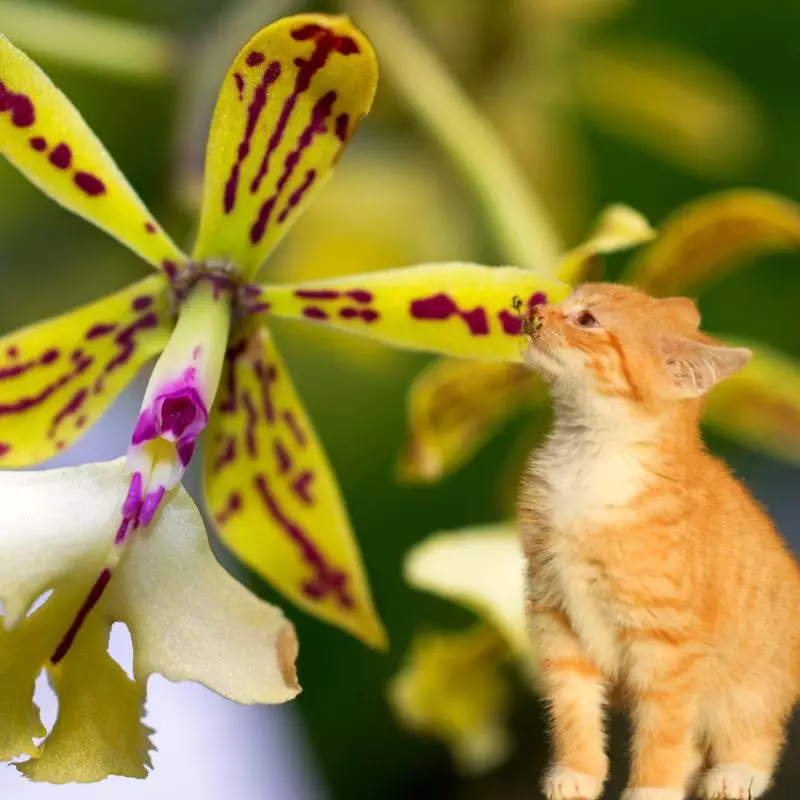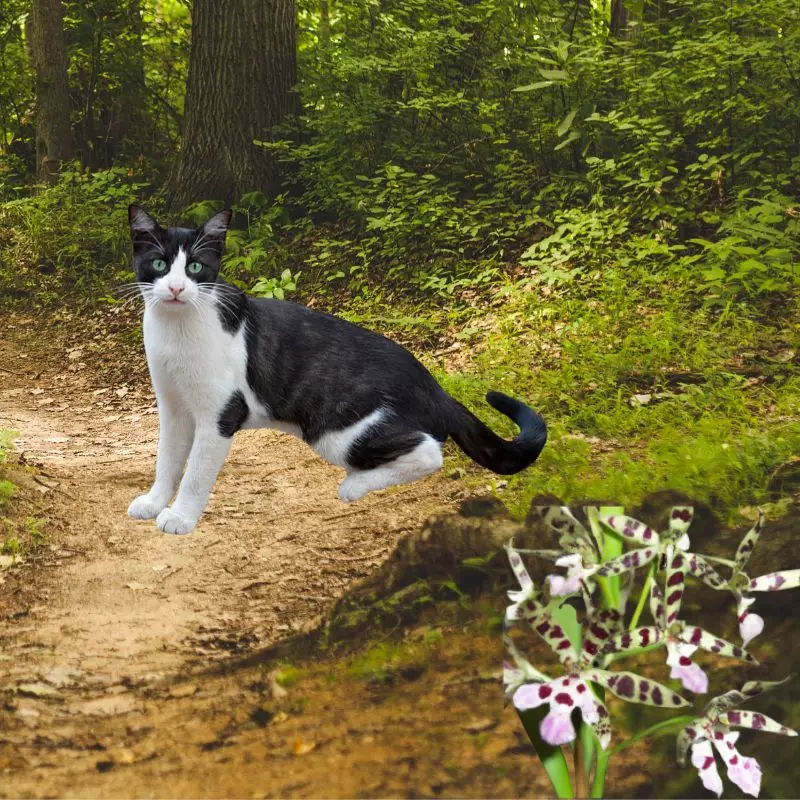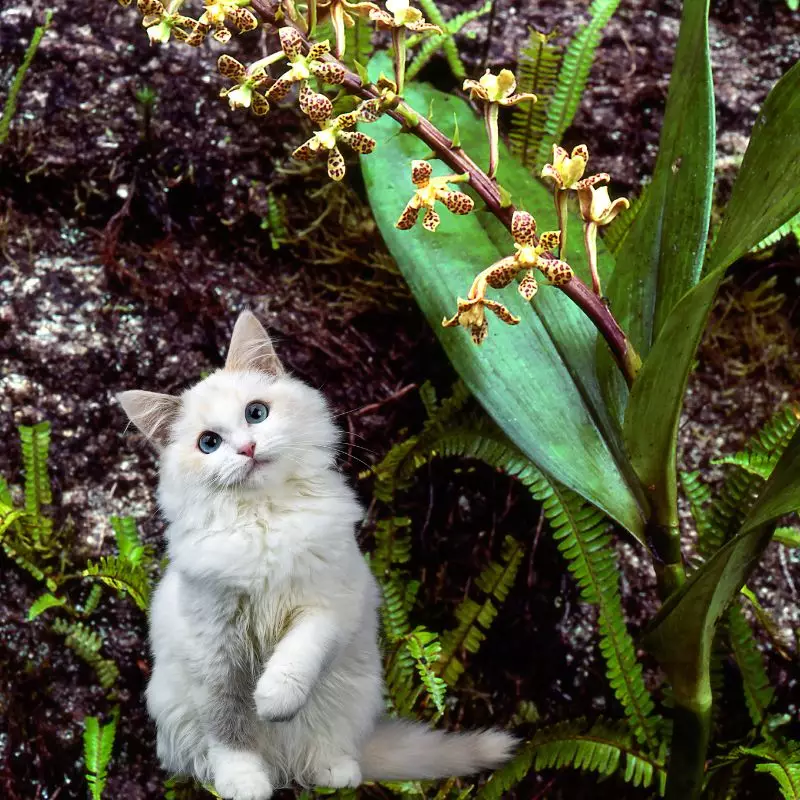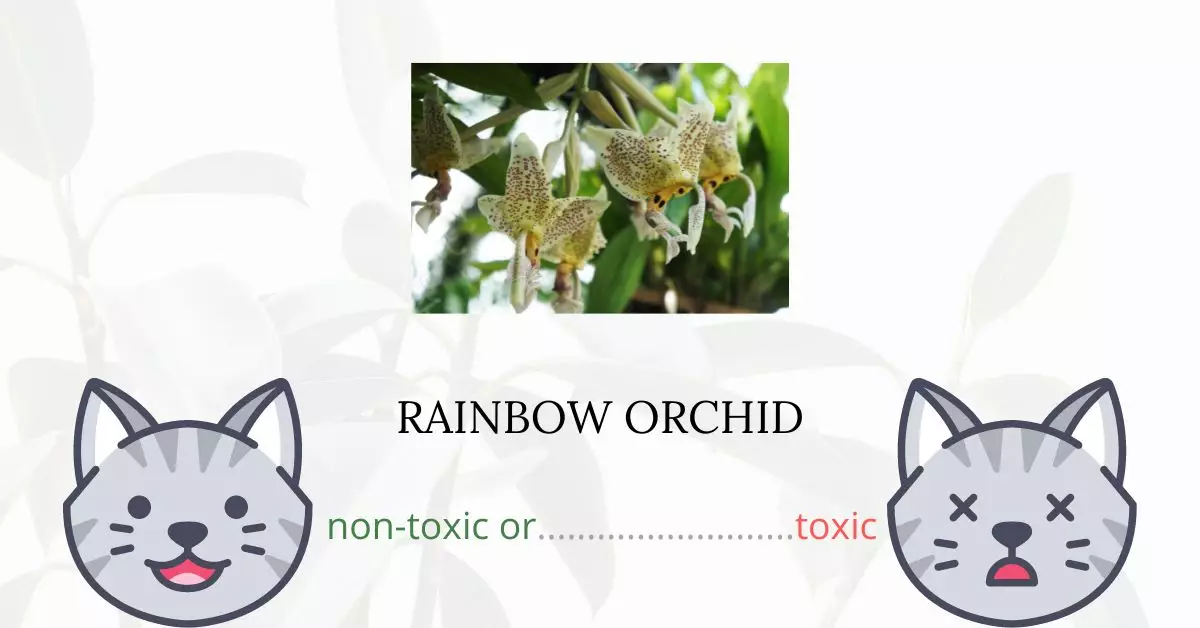Rainbow Orchids are not toxic for cats.
Based on our collaborative research with a team of experienced DVMs (doctors of veterinary medicine) and referencing high-authority websites such as the ASPCA (American Society for the Prevention of Cruelty to Animals) and PetMD, we can confirm that the rainbow orchid is classified as a non-toxic plant.
This means that you can safely cultivate a rainbow orchid in your home, even if you have cats as companions. It’s worth noting that, in general, orchids, including other species, are considered safe for not only cats but also dogs and horses. Through our ongoing partnerships and rigorous research methods, we aim to provide accurate and up-to-date information on the potential risks associated with various plants and their effects on our beloved pets.
Can Cats Eat Rainbow Orchid?

Since the rainbow orchid does not contain toxic properties, it wouldn’t harm your feline to have a taste of your rainbow orchid. However, you should not tolerate your cat’s behavior of eating houseplants. They might get used to messing and munching on your plants and that would be a problem for you.
Additionally, cats should not eat plants as a part of their regular diet. They are carnivorous animals that feed on protein-based food so plants are not suitable for them. Too much eating of plants may cause them an upset stomach and other gastrointestinal problems.
What is Rainbow Orchid?

Rainbow orchid is also known as the Prism-Shaped Seedpod, Prosthechea, Encyclia prismatocarpa, Epidendrum prismatocarpum, Panarica prismatocarpa, and Pseudencyclia prismatocarpa. This plant is a species of the genus Prosthechea and is native to Costa Rica and Panama.
The rainbow orchid is a large epiphyte that grows to a height of 50 cm. It has elongate, conic pseudobulbs that are 15 cm long and up to 5 cm in diameter, and it has 2 to 3 apical leaves that are 12-33 cm long and 6.4 cm wide that are oblong-elliptic, basally conduplicate, and clasping.
It has long-lasting waxy, fragrant flowers that bloom in the spring, summer, and fall. The color of the flowers varies, but the petals are usually sulfur-yellow with dark, sepia-brown, or crimson spots. The color of the lips can range from creamy yellow to pink-red.
Keeping Cats Away From Rainbow Orchid
Cats with pent-up energy will most likely strike plants with long dangling vines in the same way they would attack prey. Playing with your cat will help to relieve her boredom. Use a feather wand or fishing pole-style cat toys that she can chase around the room. Also, make sure your cat has enough cat toys to keep her occupied and away from the plants while you are at work.
A gentle misting with a spray bottle of water can help deter cats from your garden. When your cats approach your plants, spray them with water. Make certain that your cat relates the water with the plant and not with you when you do this. Otherwise, she’ll keep pursuing your plants when you’re not looking. Motion-activated sprinkler systems can also aid in cat deterrence.
Plants to Avoid For Your Cats
If you are a cat owner and unsure if the plants growing in your yard are harmful to your cats, check out this list of toxic plants for cats. You can also check our list of non-toxic plants for cats.





